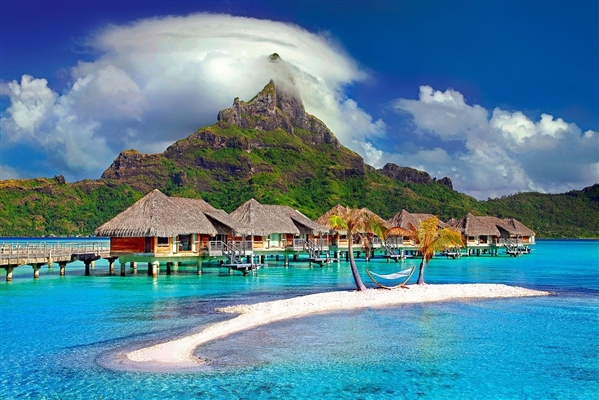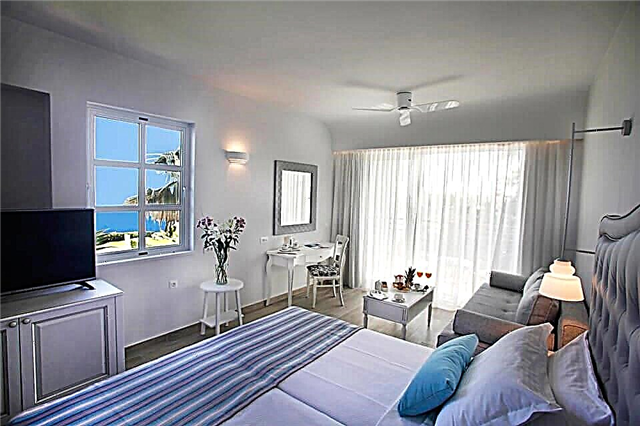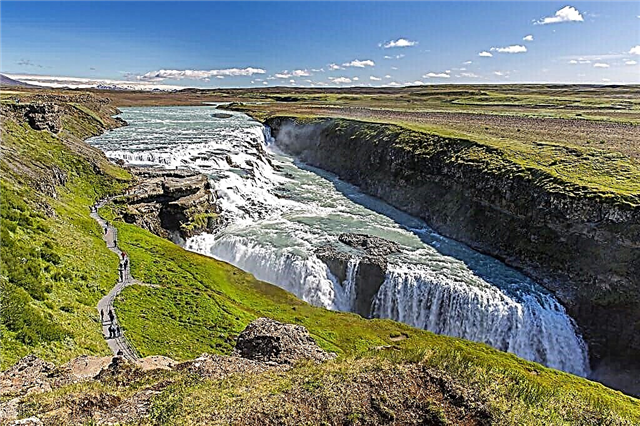Address: Moscow, Lavrushinsky lane, 10
Date of foundation 1856 year
Coordinates: 55 ° 44'29.0 "N 37 ° 37'12.9" E
Content:
The famous gallery exhibits over 180 thousand works of Russian art. The world of paintings by Russian artists fascinates and attracts many guests. Schoolchildren, students, employees and pensioners come to the Tretyakov Gallery to see ancient icons, mosaics, landscapes, portraits and historical paintings. According to statistics, over one and a half million visitors visit one of the most famous museums in Moscow every year.

View of the entrance to the Tretyakov Gallery in Lavrushinsky Lane. In the center - a monument to Pavel Tretyakov
Museum founder
Pavel Tretyakov was born in 1832 into the family of a Moscow merchant. He was the eldest of 12 children and was brought up with his younger brother Sergei. As adults, the brothers founded several paper mills and managed to earn a large fortune, which was estimated at a huge amount at that time of 3.8 million rubles.
Few people know, but at first Tretyakov became interested in collecting paintings by Western European masters. He had no experience, made occasional acquisitions and, over the years, bought up several paintings and graphic works by Dutch artists. The novice collector immediately faced the problem of determining the authenticity of old paintings. He quickly realized how many fakes exist on the painting market and decided to buy works from the artists themselves. The founder of the gallery followed this rule until his death.

Hall number 9 - "Horsewoman" - 1832 (Karl Bryullov)
In the middle of the 19th century, Pavel became interested in collecting paintings by Russian painters. The first purchased canvases were works by artists Schilder and Khudyakov. In 1851 he became the owner of a spacious house, acquired especially for the growing museum.
16 years later, the Tretyakov brothers opened a private collection of paintings for the Moscow public. By this time, the gallery contained more than 1200 paintings, 471 graphic works, several sculptures and many icons. In addition, over 80 works by foreign artists were exhibited here.

Hall number 26 - "Heroes" - 1881 - 1898 (Viktor Vasnetsov)
At the end of the summer of 1892, after his brother died, Pavel turned to the Moscow City Duma and handed the collection over to the city. He was awarded the title of honorary resident and appointed the museum's lifelong trustee.
Tretyakov helped Russian painters a lot. He ordered canvases on historical themes and portraits of prominent Russians to talented artists. Sometimes the patron paid the painters the way to the desired place. Tretyakov died at the age of 65, in 1898.

Hall number 28 - "Boyarynya Morozova" - 1884 - 1887 (V. I. Surikov)
Gallery history
The art collection of paintings was supported by Tretyakov's bequest capital - 125,000 rubles. Another 5000 was paid by the state annually. With interest from the money of the patron, new paintings were purchased.
The gallery was housed in a house bought by the Tretyakovs in 1851. However, the collection was constantly growing and there was not enough space for it. The museum building was rebuilt several times. At the beginning of the last century, it acquired an expressive facade designed by the architect Vasily Nikolayevich Bashkirov based on sketches created by the artist Vasily Vasnetsov. Today the beautiful facade in the pseudo-Russian style has become one of the recognizable symbols of the Moscow museum.

Hall number 25 - "Morning in a pine forest" - 1889 (Ivan Shishkin, Konstantin Savitsky)
In 1913, the painter Igor Grabar was elected the trustee of the art collection. Shortly after the revolution, the collection received the status of a state museum. Grabar introduced the arrangement of paintings in chronology and created a fund, thanks to which it was possible to replenish museum collections.
In the 1920s, the gallery was run by the famous architect Alexei Shchusev. The museum received another building, and it housed the administration, a scientific library and funds of graphic works.

Hall number 27 - "The Apotheosis of War" - 1871 (Vasily Vereshchagin)
In the 1930s, an active anti-religious campaign was carried out in the country. Local authorities closed monasteries and churches, seized their property and arrested priests. Nikolsky temple in Tolmachi was closed under the slogans of fighting religion. The vacated religious building was not empty for long, and it was transferred to the museum as a storehouse for storing paintings and sculptures.
Later, the church was connected to the museum halls with a building of 2 floors, and here they began to demonstrate a huge canvas "The Appearance of Christ to the People", written by the artist Ivanov. Then a new "Shchusevsky" building appeared. At first, exhibitions were held there, but since 1940 the new halls have been included in the main museum route.

Icons in the Tretyakov Gallery
At the beginning of the war, when the Nazis were rushing to the capital of the country, the gallery began to be dismantled. All the canvases were carefully removed from the frames, rolled onto wooden shafts, and, shifted with paper, were packed into boxes. In July 1941, they were loaded onto a train and taken to Novosibirsk. Part of the gallery was sent to Molotov - present-day Perm.
The opening of the museum took place after the Victory Day. The exhibition was completely restored to its original places, and, fortunately, none of the paintings were lost or damaged.

Hall No. 10 - "The Appearance of Christ to the People" - 1837-1857 (Alexander Ivanov)
For the 100th anniversary of the opening of the museum, a hall was erected for the works of the famous Russian painter Ivanov. And in 1980 a monument to Pavel Tretyakov by sculptor Alexander Pavlovich Kibalnikov and architect Igor Evgenievich Rozhin appeared in front of the museum building.
By the 1980s, more than 55 thousand paintings were kept here. The number of visitors had grown so much that the building had to be urgently expanded. The restructuring took several years. The museum received new premises for the repository of paintings, a depository and the work of restorers. Later, a new building appeared near the main building, which was named "Engineering".

Hall number 19 - "Rainbow" - 1873 (Ivan Aivazovsky)
Interesting facts about the museum
All art museums in the world are engaged in protecting paintings from vandals, and the gallery in Moscow is no exception. In January 1913, a misfortune happened here. An unbalanced viewer pounced on the famous painting by Ilya Repin and cut it. The painting depicting the Russian Tsar Ivan IV the Terrible and his son was badly damaged. The museum curator Khruslov, having learned about the attack, committed suicide out of despair. The author and other artists participated in the restoration of the painting, and the faces of the heroes were recreated anew.
In the spring of 2018, another tragedy happened with the same picture. A drunken vandal broke the glass that protected the canvas and damaged its central part in three places. Later, he could not clearly explain what he had done.

"The Siege of Pskov by the Polish King Stephen Bathory in 1581" - 1839-1843 (Karl Bryullov)
One of the most revered Russian icons, the Mother of God of Vladimir, is kept behind the path-resistant glass in the gallery. This relic is more than ten centuries old. According to legend, the famous icon protected Muscovites and saved the city from the invasion of the troops of Khan Mehmet-Girey. Since the paint layer began to peel off over time, the restorers carried out restoration work, but did not touch the faces of the Mother of God and Jesus.
Museum complex
In addition to the main building in Lavrushensky Lane, the Tretyakov Gallery owns a large exhibition complex at Krymsky Val, 10. It exhibits works by famous artists of the XX-XXI centuries. The Tretyakov Gallery also oversees several memorial museums of artists and sculptors in the city.

Hall number 17 - "Troika" ("Apprentices of artisans are carrying water") - 1866 (Vasily Perov)
The museum complex is open and accepts Muscovites and tourists all year round. The gallery is not only large and small halls with paintings. It hosts lectures, film screenings, concerts, performances and creative meetings with artists.
The gallery doors are open to guests on Tuesday, Wednesday and Sunday from 10:00 to 18:00, and on Thursdays, Fridays and Saturdays from 10:00 to 21:00. Please note that the museum ticket offices stop selling tickets one hour before closing time. Visitors under 18 are admitted to the gallery free of charge. Tickets for exhibitions are valid for a month, but you can go through them on a first come, first served basis.

Hall number 3 - "Portrait of Peter III" - 1762 (Antropov A.P.)
The expositions are examined independently or as part of excursion groups. For convenience, visitors can take advantage of free mobile audio guides.
Professional guides conduct sightseeing and thematic excursions in the halls. During them, tourists are told about the history of the creation of individual paintings, they are introduced to ancient Russian art, masterpieces of painting of the 18th and 19th centuries, the work of Itinerant artists and the Russian avant-garde.

Hall number 26 - "After the slaughter of Igor Svyatoslavich with the Polovtsy" - 1880 (Valentin Baigildin)
How to get there
The main building is located in the central part of the city, at Lavrushinsky lane, 10. It is easily accessible on foot from the Tretyakovskaya and Novokuznetskaya metro stations.











